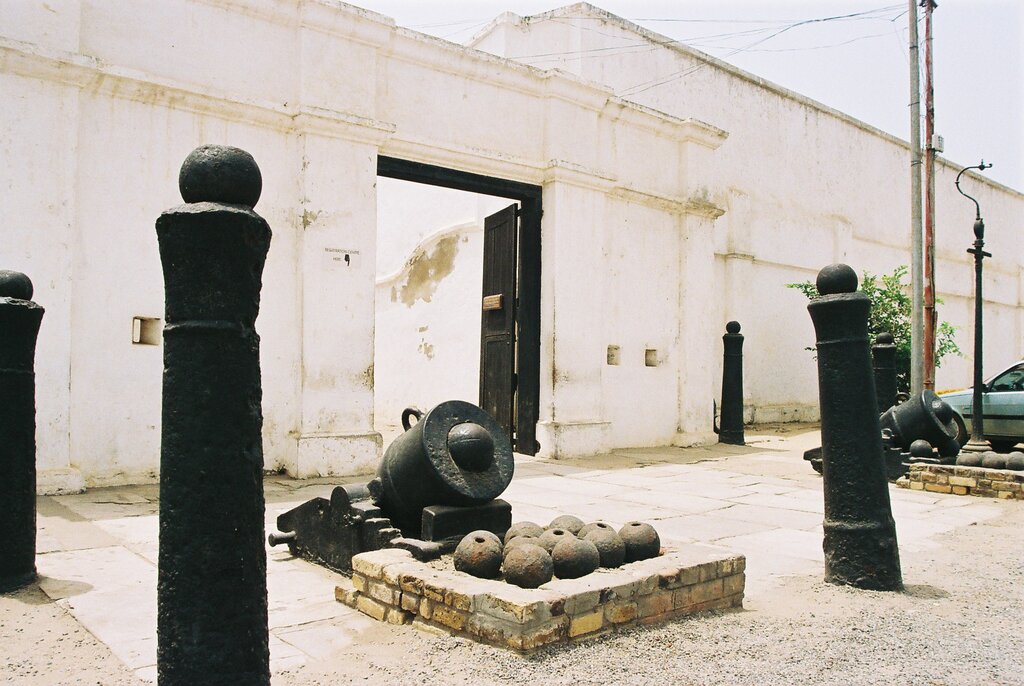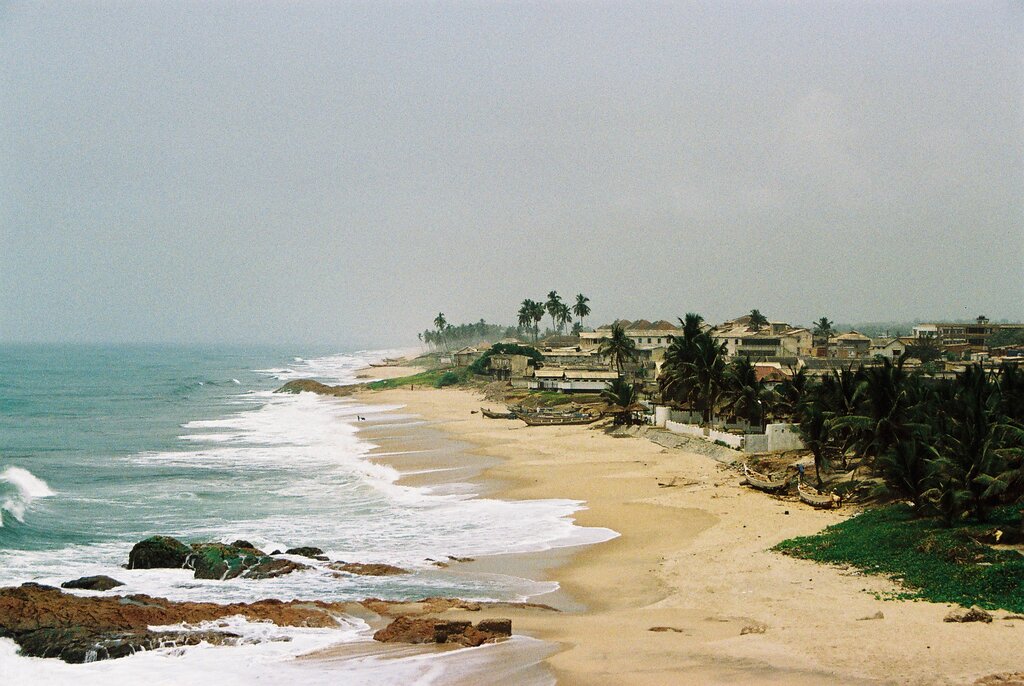Short History of Cape Coast and Cape Coast Castle
Cape Coast Castle was first built by the Swedish Africa Company in 1653 as a trading post for timber and gold. However, it was later taken over by the British, who expanded and fortified it. Over time, the castle became one of the largest and most important slave trading centers in West Africa.

Left behind by Colonial Powers (c) Remo Kurka
Thousands of enslaved Africans were held in the dungeons of Cape Coast Castle in horrific conditions, awaiting shipment across the Atlantic during the trans-Atlantic slave trade. The infamous “Door of No Return” at the castle marked the last point enslaved Africans saw of their homeland before being taken to the Americas.

Cliffs at Cape Coast Castle. These are now covered below artificial rocks (c) Remo Kurka
The castle also served as the seat of British colonial administration for the Gold Coast (now Ghana) until the capital was moved to Accra.
Today, Cape Coast Castle is a UNESCO World Heritage Site and one of Ghana’s most visited historic monuments. It stands as a somber but important symbol of remembrance, education, and the resilience of the African spirit.